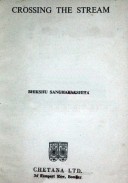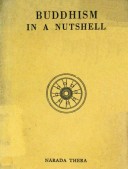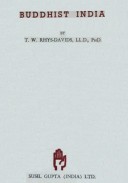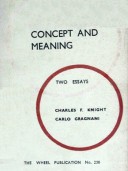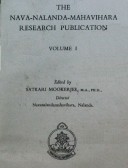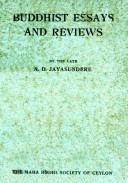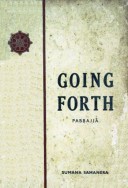Tìm Sách
Sách tiếng Anh-English >> The Golden Age of Zen
Thông tin tra cứu
- Tên sách : The Golden Age of Zen
- Tác giả : John C. H. Wu
- Dịch giả :
- Ngôn ngữ : Anh
- Số trang : 325
- Nhà xuất bản : United Publishing Center-Taiwan
- Năm xuất bản : 1975
- Phân loại : Sách tiếng Anh-English
- MCB : 12100000011625
- OPAC :
- Tóm tắt :
PREFACE
By the “Golden Age of Zen” I mean the Zen as experienced and taught by the great Zen Masters of the T’ang period (618-906). Although the School of Zen had its origins in the sixth century with the coming of Bodhidharma, its solid foundations were actually laid by Hui-neng in the seventh century. The whole movement flowered forth magnificently in the hands of such vigorous spirits as Ma-tsu, Shih- t’ou, Nan-ch’uan, Pai-chang, Huang-po and Chao-chou. In the ninth century, it began to ramify into different branches. Inevitably the sap of Zen ran thin in the course of the succeeding generations, but with the founders of the “houses” there is still no sign of abatement of the original vigor.
In the epilogue I have drawn mainly upon the Zen literature after T’ang. Those little sparks of Zen will serve to indicate, that although the School of Zen has long since passed its zenith, the spirit of Zen never dies.
Father Thomas Merton’s Introduction to this book presents an illuminating picture of the nature of Zen Here as in his other writings he goes to the bottom of things, and he finds that at bottom Humanity is one, and one with its Divine Source. I suggest that the reader should first study his introduction before he proceeds to take up the body of the book. In a real sense this book may be regarded as a long foot-note to the profound insights embodied in his introduction.
I am grateful to Father Merton not only for the invaluable introduction he has contributed, but even more for his generous cooperation in the making of the book itself. There is no telling how much the friendship of this true man has meant to me during all these lonely years of my life.
The story of my friendship with the late Daisetz Suzuki is told in the appendix to this book. It is touching to think that he spent a great part of his last months perusing and enjoying the. manuscript of this book.
Finally, this book would not have seen the light so soon were it not for the encouragement of my friend Dr. Chang Chi-yun, the founder and the head of the College of Chinese Culture. He is a humanist in the full sense of the word, for to him nothing human is alien. At his request I had the pleasure of offering a special seminar on Zen Buddhism at his college, and I have not only enjoyed but profited by the class discussions. I had taught the same subject at the Seton Hall University. It is delightful to compare the reactions from students of enrirely different backgrounds and to find that ultimately the diversity of views points up the selfsame mysterious Whole.
In this book I have used “Zen” and “Ch’an” interchangeably. With this exception, I have followed the Wade- Giles system of romanizing the Chinese words.
John C. H. Wu
(Wu Ghing-hsiung)
Taipei, Taiwan, China
August 22, 1967
PREFACE TO THE SECOND EDITION
The first edition of this book, published in 1967, has been out of print for some time. I am, therefore, happy to accede to the earnest request of United Publishing Center to publish the present edition m order to answer the growing demands for the book. As the first edition is fraught with misprints, I have taken this occasion for correcting all the mistakes to the best of my ability. In this I am indebted to the kind cooperation of my friends Dr. Wei Tat and Mr. Liu Chih-hsiang.
The reader will be interested to know that a Chinese translation of this book was made by the able hands of Dr. Wu Yi and published by the Taiwan Commercial Press in 1969. This excellent translation has since passed through five editions. I am deeply consoled to learn that the message of this book is so well received among the younger generation of Chinese intellectuals.
Finally, let me offer this edition to the blessed memory of Thomas Merton, one of my dearest friends.
August 4, 1975 John C. H. Wu
91 Yang Ming Road,
Yangmingshan, Taipei,
Taiwan, Republic of China.
CONTENTS
Prefact……………………i
Introduction: A CHRISTIAN LOOKS AT ZEN By Thomas Merton
Chapter I. ZEN: ITS ORIGIN AND ITS SIGNIFICANCE
Chapter II. BODHIDHARMA AND HIS IMMEDIATE SUCCESSORS
Chapter III. HUI-NENG THE SIXTH PATRIARCH
Chapter IV. HUI-NENG’S FUNDAMENTAL INSIGHTS
Chapter V. MA-TSU TAO-I
Chapter VI. PAI-CHANG AND HUANG-PO
Chapter VII. CHAO-CHOU TS’UNG-SHEN
Chapter VIII. OUTSTANDING MASTERS IN THE LINEAGE OF SHIH-T’OU
Chapter IX. KUEI-SHAN LING-YU: FOUNDER OF THE KUEI-YANG HOUSE
Chapter X. TUNG-SHAN LIANG-CHIEH: FOUNDER OF THE T’SAO-TUNG HOUSE
Chapter XI. UN-CHI I-HSUAN: FOUNDER OF THE UN-CHI HOUSE
Chapter XII. YUN-MEN WEN-YEN: FOUNDER OF THE YON-MEN HOUSE
Chapter XIII. FA-YEN WEN-I: FOUNDER OF THE FA-YEN HOUSE
Chapter XIV. EPILOGUE: LITTLE SPARKS OF ZEN
Notes
Index
 Facebook
Facebook
 Google
Google
 Google+
Google+


